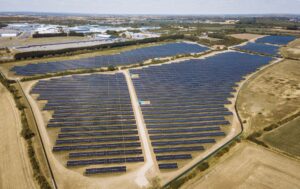4 in 5 people believe ‘fresh air’ from outside is key to improving air quality in their homes, but this could actually be counterproductive and worsen indoor air quality, research has today revealed.
The new research by the Building Engineering Services Association (BESA) found homeowners are ignoring the impact of surrounding pollution sources such as busy roads on their indoor air quality.
In the study of 2,000 households across the UK, over half defined fresh air as simply air from outside their home.
This understanding of what is ‘fresh air’ is played out in the actions that households take to improve the quality of air in their homes, with 80% of people believing that simply opening a window is key to creating good ventilation in a home.
Findings from the research also revealed that almost four-fifths (78%) of people regarded the air near their home as very or fairly clean. This is despite many people living close to highly polluting infrastructure, with the majority of people not linking the impact that these pollutants can have on the quality of air in their homes.
For people living within a mile of an A-road, 76% of people regarded the quality of air as clean, while this was 74% for a train station, 73% close to a motorway and 70% for those living close to an industrial plant.
However, while many pollutants do come from outside of the home, there are many products and activities within the home that are a significant cause of poor indoor air quality. The research suggests people are generally aware of some of the causes of poor indoor air quality, with four in five (81%) indicating mould as a key cause, 74% highlighting wood burning, 68% fresh paint and 63% cleaning products.
BESA Chief Executive David Frise commented: ‘In many circumstances homeowners are quite rightly looking to improve the indoor air quality of their homes by opening a window and bringing in new, “fresh” air. However, it is critical that people do understand the realities of the wider air pollution issue and that for millions of households, opening a window could actually have a negative impact on the quality of air in a home.
‘Our research indicates that many people feel that the quality of air near their home is fairly clean. But these facts ignore the reality that for millions of people, they will live within a couple of miles of an A-road or a motorway, a train station or even an industrial plant. All of these create millions of tonnes of highly damaging air particles which enter our bodies and can remain for up to three months. These pollutants can also develop or irritate existing respiratory conditions such as asthma or lung cancer.’
The findings come as part of BESA’s campaign to raise awareness of the importance of indoor air quality, especially in our homes.
BESA encourages households to take simple steps such as monitoring their local pollution levels as part of its awareness campaign.
Frise added: ‘When it comes to opening windows, people should rightly open these, particularly as a way of dispersing the toxic air particles that build up inside the home. However, if living close to areas of high pollutants outside of the home, such as a busy road, people should limit the length of time that they keep windows open. This is critical on days where there are high levels of pollution in the surrounding area. Monitoring your local pollution levels needs to become as common as checking the weather!’
In related news, new research has found that mechanical ventilation systems significantly reduce the levels of particulate matter, carbon dioxide and monoxide, and formaldehyde from indoor air, reducing the risk of respiratory and cardiovascular illness.
Photo by Jelleke Vanooteghem











![A breath of fresh data: Inside a Supersite [Part 2]](https://airqualitynews.com/wp-content/uploads/sites/2/2025/08/supersite3-300x213.jpg)


![A breath of fresh data: Inside a Supersite [Part 1]](https://airqualitynews.com/wp-content/uploads/sites/2/2025/08/supersite2-300x225.jpg)


How are people supposed to monitor their local air quality? This information doesn’t seem readily available!
A good discussion thank you. Where you say ‘Monitoring your local pollution levels needs to become as common as checking the weather!’, I agree. But where are we to get that information from? Sorry but I hear nothing on the radio or TV and about dailky pollution levels and I do not trust the DEFRA webapge forecast maps or their current levels list. This is because I know there is absolutely no air quality monitoring being done anywhere near where I live. I checked with our local council and they do not do this. Where the information comes from on the DEFRA pages is not clear to me. I think it is from computer modelling but why can’t we have proper realtime pollution measurements taken in all out towns ands villages these days? If it is a network problem, why can’t DEFRA team up with one of the commercial sensor companies? Can the BESA perhaps suggest one? I think the DEFRA levels are too broadly averaged out and do not always take into account the very local air pollution where families live. Particularly in the countryside. How can they if no real monitoring is being done?
Chris;
> DEFRA does use modelling to generate background mapping, using source assumptions and AURN sites for verification / calibration.
> Proper real-time quantitative monitors are extremely expensive, large, and require space for installation & permanent power / comm’s, regular calibration etc. – so ultimately, cost. Low-cost electronic sensors have not yet been shown to be sufficiently reliable for regulatory purposes (they are insufficiently precise, or accurate to treat data-generated in different places as equivalent).
> Modelled DEFRA levels are broadly averaged as they are intended to be ‘background’ levels. AURN sites are classified by location type, so some will represent urban centres, some roadside exposures, some rural environments (etc.), and they are each designed to be representitive of a an area of a given scale, reflecting the local context. For example, Rural Background sites used for assessment of ecological limits aim to be representitive of an area of at least 1000 sq.km, and in principle, so you only need one per 1000 sq.km.
It’s also worth remembering that the legislative standards are intended to apply to ambient air, and and are not intended to apply to point sources; concentrations at a specific location might substantially exceed limits, but not be regarded as ‘exceeding air quality limits’ if the characteristics of the exceeding location is not ‘representitive’ of ‘ambient’ air quality within the broader locality. The legislative standards have specific ‘representativeness’ criteria precisely to avoid small sources being treated as air quality problems (e.g., consider a domestic gas boiler as a small point source, and the boundary of the neighbouring property as the compliance point – clearly it’s not desirable to regard this scenario to be an ‘air quality’ problem). The representativeness criteria aim to put limits on this kind of ‘assessment scale’ issue, and monitoring points have traditionally aimed to represent the ‘worst-case relevant area’, avoiding the need for high-resolution spatial sampling.
That said, Increased funding is proposed for expanding the monitoring network in connection with the requirements of the Environment Act ’21.
Jon, the modelling is the problem surely? It assumes that areas with fewer people, for example, means better air. That need not be the case at all. You say realtime monitors are too big and pricey, but I know there are some networks that are already doing this job (and reliably so) at almost no cost at all (aprt from the networking and relaying the info) and they seem very good. Why can’t Defra join in with that? For example, I think therre’s one called Purple Air and another called Sensor Community. They are international. UK risks getting left behind. I think that is an excuse. Where you talk about rural monitoring sites, I can assure you there is nothing like that at all where we live. Or where other family members are in Wales and the West Country and Cumbria. The Defra sites are many miles away so how can they “know” what the air is like in our villages and towns? I simply do not believe this, Jon. Knowing about ‘representativeness’ is all very well but that is not what you need to know at the very local level on any particualr day. For example, if there are roadworks (diesel and tar) on the children’s route into town or gorse burning going on, I wouldl like to know about the air quality that day because of asthma concerns. In the way that we can check the weather. Knowing about the very general background air for our larger area, and with that based on levels recored in a town some distance awy is of no use to some of us. Quite frankly, where you say the point is ‘to avoid small sources being treated as air quality problems …” I am a bit shocked. But I supppose it depends on what you would consider a small source? I can assure you the dust and fumes from road works lasting many days can be a big health issue for a child with asthma who has to walk along that road every day. Or for someone who has the misfortune to live nexy door to a chicken farm with a diesel generator or frequent bonfires. Maybe those sources don’t count as air pollution at Defra, John? If they come under the responsibilities of the local authority, how is that local authority going to know if the air is particularly bad or not, at a particular point? All these small sources add up and just because they come and go doesn’t mean they do not affect people’s health. It’s the same with chimney smoke, that’s moslty in winter so a yearly average would make it look less. I think we still ahve a very linbg way to go and I wish Defra would do far more, likewise local authorities. That comes down to legislation then? So I am delighted to hear ‘Increased funding is proposed for expanding the monitoring network in connection with the requirements of the Environment Act ’21. Thanks for explaining Jon. I hope the move from funding to action doesn’t take too long and that we can finally know know, on a daily basis, just how good or bad our local air really is..
Thanks again for explaining Jon. I looked at the defra maps. Where you said ‘Rural Background sites used for assessment of ecological limits aim to be representitive of an area of at least 1000 sq.km, and in principle, so you only need one per 1000 sq.km’ am I right in assuming that means the AQ measurements, as for PM, collected at an AURN site are taken as representative of a large surrounding area as far as 40 or 50 miles out from the monitoring site itself? I honestly can’t believe that will be very accurate, can you? The nearest site to us is even further way and yet it seems that site is used as indicative of the whole county. I am sure the AQ is worse for various pollutants in the towns in our county than out in the countryside but even there the AQ must vary considerably depending on the roads, housing estates, farming and light industry. All the more reason for expanding the monitoring network, as you mentioned. Do you have a reference please where you talk about assessment of ecological limits?
Slightly confusing-, and honestly, I think unhelpful- messaging in this article. Indoor air pollution is a problem, ventilation is a good solution. People should think about the relative risks – indoor risks are likely to outweigh outdoor by some margin, especially if ventilation of habitable spaces is being avoided. There seems to be some confusion between advice that might apply to regional ambient pollutants (e.g. PM2.5) and ‘source proximal’ (local ambient) pollutants (e.g. NOx / NO2 / PM10). At the least the article should stress when to ventilate well, and when to avoid it (if you live in an area of poor-, or poor-but-compliant AQ), rather than simply arguing that outdoor air could make your indoor air quality worse. It is worth remembering that the outdoor air provided the volume of air that is trapped in your dwelling, to which pollutants from indoor sources are being added.
You can’t blame individuals for believing that outside air equates to ‘fresh’ air when that’s exactly the Government’s official position – at least when it comes to Covid advice. Schools are even told that air purifiers should only be used as a temporary measure and that additional ‘fresh air’ from outside is always preferred. Clearly the Department for Education doesn’t talk to anyone with knowledge of air pollution.
Thanks Jon – you make a good point here. The indoor air has to come from somewhere! But it might not be wise to air the house or office at times when neighbours are having a bonfire or BBQ. But I sippose that would be obvious! On the other hand, if your neighbours make plenty fo chimney smoke, trying to air your house might be difficult much of the time.Depends on where you live too and the general pattern of breeze movement and how far off the motorway is etc. A good starting point would be to be able to monotor your own air and see how it changes across the day and evening and different times of year, and when there are known pollutants around. You might the find you want, or need, to mvoe house, of course..